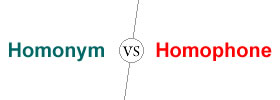Different Types of Depression
Key Difference: Depression is an umbrella term for nine different types of depression that includes similar symptoms but are quite different from each other.
 There are going to be times when one feels down, but these moments of sadness are often short lived. However, when one can’t seem to move on from that bout of sadness and keeps finding themselves sad for no particular reason, then they might be suffering from depression.
There are going to be times when one feels down, but these moments of sadness are often short lived. However, when one can’t seem to move on from that bout of sadness and keeps finding themselves sad for no particular reason, then they might be suffering from depression.
Depression is not such as simple concept and nor is it just sadness. There are various other symptoms that play a huge part when it comes to depression. The severity of depression is often understated with a lot of people failing to realize that it is one of the deadliest diseases that can happen to a lot of people. Hence, it is important to never diagnose yourself and always consult a specialist if one believes that they could have depression.
While, depression is often associated with sadness and thoughts of depression, to define the term ‘depression’ is not so easy. Depression is actually an umbrella term that encompasses a variety of different forms of depression. The symptoms for each differs drastically.
The different types of depression:
Major Depression
This is the most common type of depression that is diagnosed by medical professionals. It is also known as major depressive disorder and lasts all times of day and all days of the week for long periods of time.
- Symptoms: loss of interest or pleasure in your activities, weight loss or gain, trouble getting to sleep or feeling sleepy during the day, feelings of being "sped up" or "slowed down", being tired and without energy, feeling worthless or guilty, trouble concentrating or making decisions, thoughts of suicide, etc.
- Treatment: includes talk therapy and medication. Electroconvulsive therapy (ECT) and repetitive transcranial magnetic stimulation can also be used for extreme depression.
Persistent Depressive Disorder
This form of depression lasts years on and off. It is also known as dysthymia. It is believed to a less severe form of depression but is still considered a dangerous type. It lasts for years and is diagnosed if patient has been depressed for over a year. During this depression, people can still function but not optimally.
- Symptoms: change in your appetite (not eating enough or overeating), sleep too much or too little, lack of energy, or fatigue, low self-esteem, trouble concentrating or making decisions, feel hopeless, etc.
- Treatment: Talk therapy is considered far more effective than medications, but a proper combination is considered as the optimal choice.
Bipolar Disorder
Bipolar disorder is when a person suffers from drastic mood changes that can be triggered without any prior warning. The term is also known as ‘manic depression’ because the patient suffers from moods of high energy to low energy. The part with the low energy is associated with the depression.
- Symptoms: Similar to major depression (loss of interest or pleasure in your activities, weight loss or gain, trouble getting to sleep or feeling sleepy during the day, feelings of being "sped up" or "slowed down", being tired and without energy, feeling worthless or guilty, trouble concentrating or making decisions, thoughts of suicide, etc.)
- Treatment: Medications such as mood stabilizers. It is believed that psychotherapy can also be helped.
Seasonal Affective Disorder (SAD)
A short period of major depression that occurs during a specific season, most commonly winter. It is believed that the cold and the limited sunlight is the reason for many people feeling sad.
- Symptoms: Similar to major depression (loss of interest or pleasure in your activities, weight loss or gain, trouble getting to sleep or feeling sleepy during the day, feelings of being "sped up" or "slowed down", being tired and without energy, feeling worthless or guilty, trouble concentrating or making decisions, thoughts of suicide, anxiety, increased irritability, daytime fatigue, and weight gain, etc.)
- Treatment: Antidepressants and also light therapy (sitting in a brightly lit room or in front of a bright lit box for 30 minutes a day).
Psychotic Depression
Patients suffer with major depression that has periods of psychotic breakdown that includes seeing things and hearing things that are not there. According to the National Alliance on Mental Illness, around 20 percent of the people with depression have bouts of psychotic episodes.
- Symptoms: All of the symptoms of major depression as well as hallucinations (seeing or hearing things that aren't there), delusions (false beliefs), paranoia (wrongly believing that others are trying to harm you).
- Treatment: A combination of antidepressant and antipsychotic drugs plus psychotherapy.
Postpartum Depression
This depression is found in new mothers who suffer from depression post the birth of their child. For many new mothers this depression fades in a few days, many other mothers continue to suffer up to years for this depression. It can occur anywhere from weeks to months or even years after giving birth.
- Symptoms: feelings of extreme sadness, fatigue, loneliness, hopelessness, suicidal thoughts, fears about hurting the baby, and feelings of disconnect from the child, etc.
- Treatment: A combination of psychotherapy and drug therapy.
Premenstrual Dysphoric Disorder (PMDD) 
This form of depression affects women during the second half of their menstrual cycles. It often occurs before the start of their period or during their period.
- Symptoms: In addition to depression symptoms, they may suffer from mood swings, irritability, anxiety, trouble concentrating, fatigue, change in appetite or sleep habits, feelings of being overwhelmed, etc.
- Treatment: Antidepressants and oral contraceptives can be used.
'Situational' Depression
This type of depression does not have a technical medical term but is most commonly associated with the feelings of depression that occur when certain situations occur that can become overwhelming such as death in the family, stress, divorce, job loss, etc.
- Symptoms: mild symptoms of depression
- Treatment: Psychotherapy is often used to help.
Atypical Depression
It is actually not that unusual, rather it is one of the most common types of diagnosed depression. Unlike major depression, in this depression a happy event may change the mood of the patient. So, the patient would be happy for that particular small event before going to back to being sad.
- Symptoms: Similar symptoms of major depression but also includes a heaviness in the arms and legs, similar to a form of temporary paralysis. Other symptoms include increased appetite, sleeping more than usual, feeling of heaviness in your arms and legs, oversensitive to criticism, etc.
- Treatment: Antidepressants and Psychotherapy are often used to help.
Image Courtesy: youtube.com, keralaayurveda.biz









Add new comment